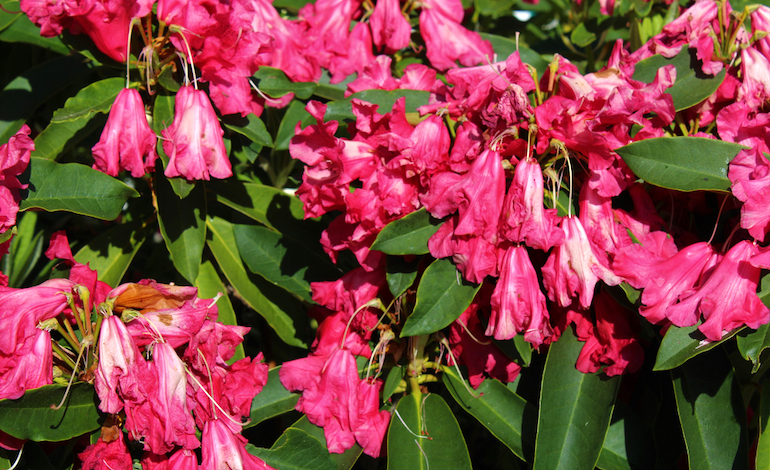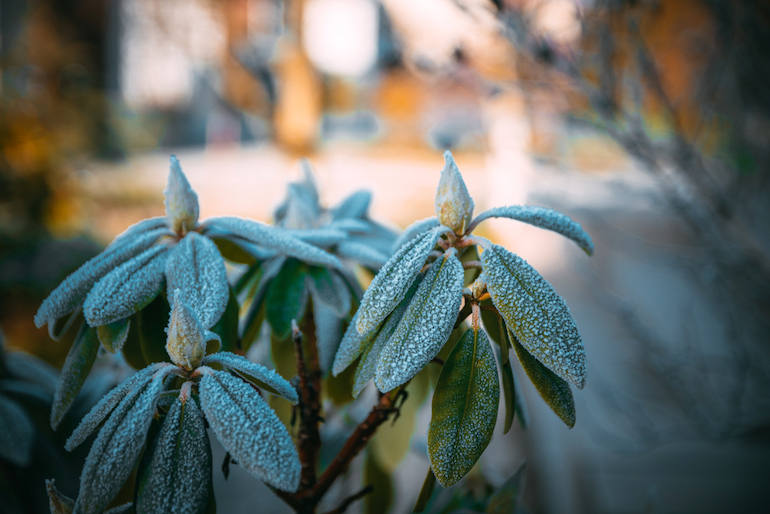
How to prune rhododendrons
Rhododendrons are grown for their springtime flowers - exuberant, colourful blooms set against glossy, evergreen leaves. While there’s no need to prune rhododendrons, you may want to keep their overall size in check or rejuvenate a neglected specimen. While you’re busy with the secateurs, a little deadheading will keep your shrub looking great too.
When to prune a rhododendron

Shrubs can be deadheaded and lightly pruned once the flowers have faded in spring
Image: Aprilflower/Shutterstock
The simplest form of pruning is deadheading, which encourages the plant to put its energy into new growth rather than producing seed. As soon as the shrub has finished flowering in spring you can remove the spent flowers, cutting just above a set of leaves. This is also a good time to remove dead, dying or diseased branches.
If your rhododendron needs to be significantly reduced in size using a saw, this should be done over winter when the plant is dormant, between January and March. You may sacrifice a few flowers in the spring, but it gives the plant a whole season to regrow.
How to prune a rhododendron

Hard prune overgrown shrubs in winter while the plant is dormant
Image: Jakubowski Studio/Shutterstoc
Light pruning and deadheading should be tackled with a sharp pair of secateurs, while gently reducing the size and shape of your rhododendron may be easier with long-handled loppers. Shortening the branches down to a cluster of leaves once the shrub has finished flowering will keep it from getting too big and encourage bushier growth.
Should you have an old, established rhododendron that needs to be given a new lease of life, heavy pruning is possible. Choose a frost-free day in February or March and cut back branches hard to one of the tiny, dormant buds.
If necessary, you can coppice the plant down to around 150cm tall. Proceed with caution though, as not all rhododendrons will respond well to this treatment. It may be better to spread the work over a few seasons, reducing the size of the shrub by a third each year until you reach the desired size and shape.
Always feed, mulch and water the plant well after heavy pruning.
Visit our comprehensive hub page for more info and expert advice on evergreen plants.
See all pruning guides
Individual guides
Flower & Shrubs
- Pruning Buddleja
- Pruning Camellias
- Pruning Clematis
- Pruning Fuchsias
- Pruning Hydrangeas
- Pruning Hypercium - St Johns Wort
- Pruning Lavender
- Pruning Magnolias
- Pruning Passion Flowers
- Pruning Ribes Sanguineum
- Pruning Rosemary
- Pruning Roses
- Pruning Tree Peonies
- Pruning Wisteria
- Pruning Asparagus
- Pruning Blueberries
- Pruning Goji Berries
- Pruning Honeyberries
- Pruning Raspberries
- Pruning Apple trees
- Pruning Box and Yew trees
- Pruning Catalpa trees
- Pruning Christmas trees
- Pruning Olive trees
- Pruning Patio Fruit trees
- Pruning Pear trees
- Pruning Plum trees
Fruit & Veg
Trees

Written by: Mandy Bradshaw, the Chatty Gardener
Cotswold-based Garden Media Guild member, Mandy Bradshaw, is also known as the Chatty Gardener. Passionate about gardening and writing, her beginnings are in football reporting for her primary school, and Mesembryanthemum planting with her mother. Winner of the 2018 Property Press Awards 'Garden Journalist of the Year', she writes for not only her own blog but also a range of newspapers, magazines and other gardening and non-gardening sites.Banner image: Debu55y/ Shutterstock
Sign Up For Exclusive Special Offers




© 2024 Thompson & Morgan. All rights reserved. A division of Branded Garden Products Limited.



